
Cetyl alcohol or 1-hexadeconol/hexadecyl alcohol, a white organic solid, is a non-ionic liquid soap surfactant with emulsifying and emollient properties. Cetyl alcohol, an emulsifying moisturizing fatty alcohol derived from the sperm whale, coconut oil or palm oil, stabilizes liquid soap’s attained emulsion and moisturizes the skin during soap usage. This soap surfactant’s lipophilic fatty part sucks dirt, and its hydrophilic water content helps wash off dirt. Washing your hands with liquid soap frees them of foul smells and greasy dirt. Salmonella, E-coli bacteria and other disease-causing germs are inactivated by liquid soap application with lukewarm water and removed by the mechanical lathering action and rinsing with water.
Don rubber gloves and safety goggles. Place a pot on a trivet or heat-resistant surface, as the mixing of Potassium Hydroxide and water generates tremendous heat from a chemical reaction/saponification. Mix 48 fluid oz. of distilled water with 26 oz. of Potassium Hydroxide in this pot. Set it aside.
Pour 45 oz. of coconut oil and 80 oz. of sunflower seed oil into a crock pot and heat it to 160 degrees Fahrenheit.
Keep checking the boiling Potassium Hydroxide solution temperature with a thermometer. When it reaches about 160 degrees Fahrenheit, pour it into the crock pot, which you have heating. Stir the contents of the crock pot well with a long-handled stainless steel spoon for 2 to 3 minutes. Repeat blending after 5 minutes and thereafter every 10 minutes until the tracing-inspissation occurs.
Transfer the crock pot contents into the clean and dry top pot of a double boiler. Fill the bottom of the double boiler with water up to the soap level of the top pot. Let the double boiler come to a boil. Maintain the original outer pot water level by adding more water. Stir the mélange well with a serving spoon every 15 minutes during the first hour and at longer intervals thereafter to aid absorption of the oils into the soap mix; this will take 4 to 8 hours. Turn it inside out with a serving spoon to free trapped liquids.
Add Cetyl alcohol with a 1 to 25 percent concentration to the cooking soap mixture when the mixture starts to get thick. If you don’t do this, the mixture may separate into independent oil and soap mass layers despite stirring.
Remove the soap pot from the double boiler. Keep it at a temperature of 212 degrees Fahrenheit by wrapping the pot with three or four layers of blankets or towels. Meanwhile, in a clean pot, boil 2.5 gallons of distilled water for every 125 oz. of coconut and sunflower seed oils used. Transfer the soap mixture to a bucket and add the boiled distilled water. Mix well. Put the lid on the bucket and wrap it completely in three or four layers of towels or blankets to conserve heat so that the soap can mix with the water thoroughly. Stir the soap mixture every hour for the first 3 hours and at 4- to 8-hour intervals thereafter for 2 to 3 days.
Test the mixture's pH with a pH strip to determine its exact alkalinity. Neutralize excess alkalinity above 7 to 12 pH. To neutralize excess alkalinity above 7 to 12 pH, transfer the soap-mixture from the bucket to a pot and heat to 180 degrees Fahrenheit. Add hot neutralizing solution made of 2 oz. boric acid and 8 oz. boiling distilled water (3/4 oz. neutralizing solution per 1 pound of soap paste).
Mix fragrance oils and soap colors, as desired, into the liquid soap before it cools.
Related Articles
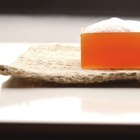
Ingredients of Bar Soap

Ingredients of Fels Naptha
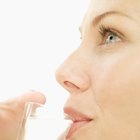
How to Make Your Own Aged Potato Vodka ...
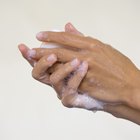
Ingredients in Hand Soap
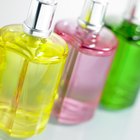
Main Ingredients in Cologne

How to Make Grapefruit Seed Extract

Phisoderm Ingredients

Grandpa's Pine Tar Soap Ingredients
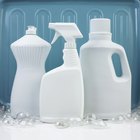
Difference Between Soap & Synthetic ...

How to Make Anti-Wrinkle Moisturizing ...
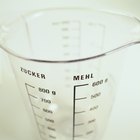
How to Dye Nomex
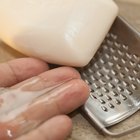
How to Make Bar Soap Into Liquid Soap ...
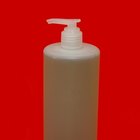
How to Add Citric Acid to Castile Soap

How to Make Homemade Lotion With ...

How to Make Body Oil With Glycerin

How Does Soap Kill Germs?

Noxzema Ingredients
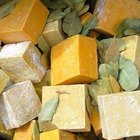
How Does Homemade Soap Compare to ...
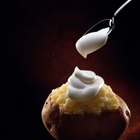
What Is "Cultured Cream"?

The Ingredients of Neutrogena Sensitive ...
References
Writer Bio
Norah Faith was born and raised in Texas and from there she has traveled nationally and internationally. After acquiring her teaching license from New Mexico State University, she found herself teaching ESL around the world. She continues to teach today and finds satisfaction writing for Demand Studios and other sites.
Photo Credits
sperm whale diving image by Lars Lachmann from Fotolia.com